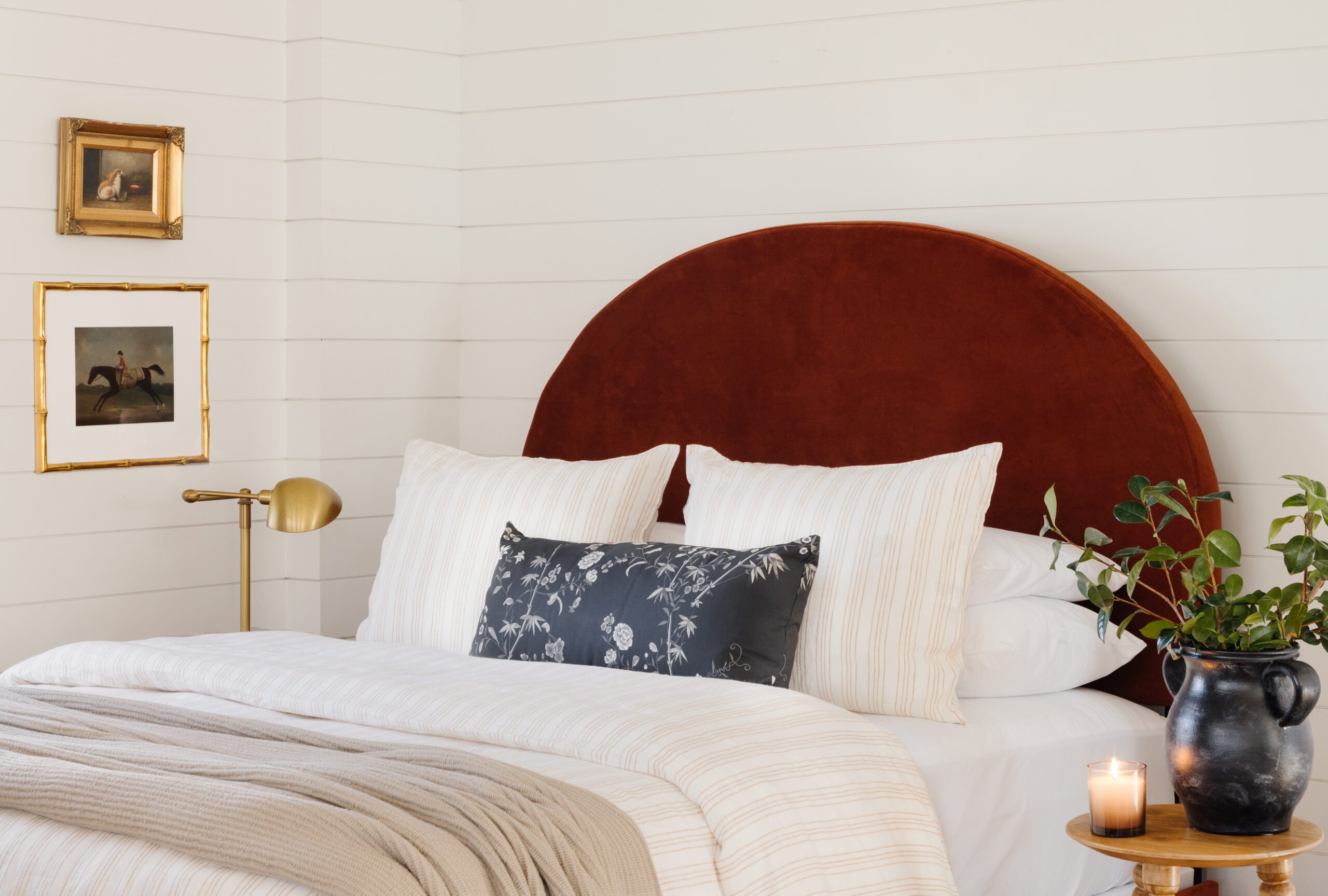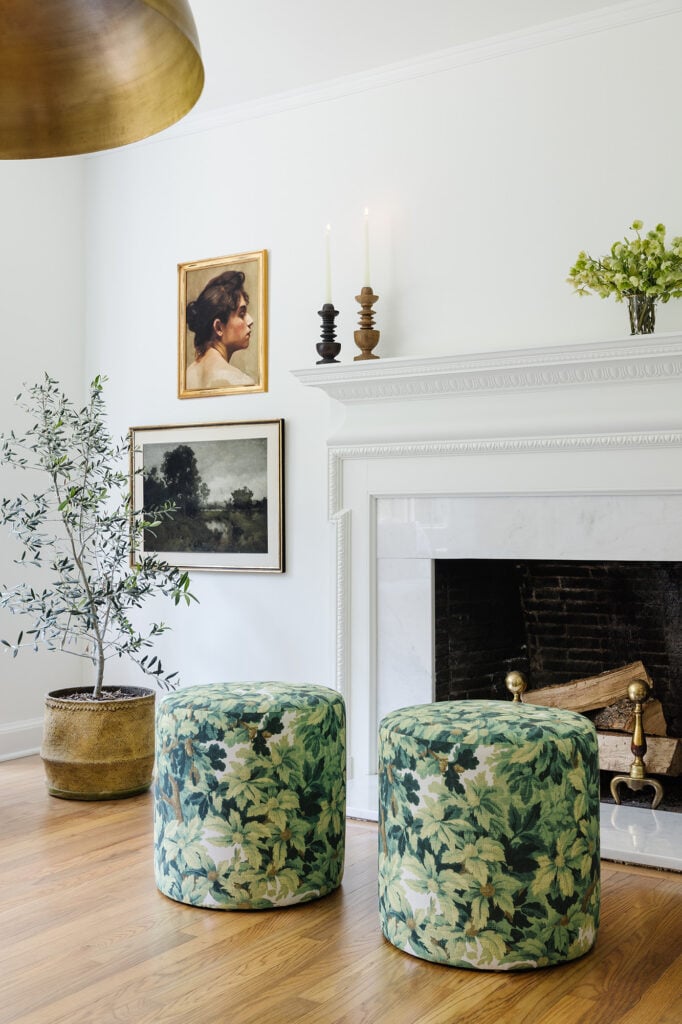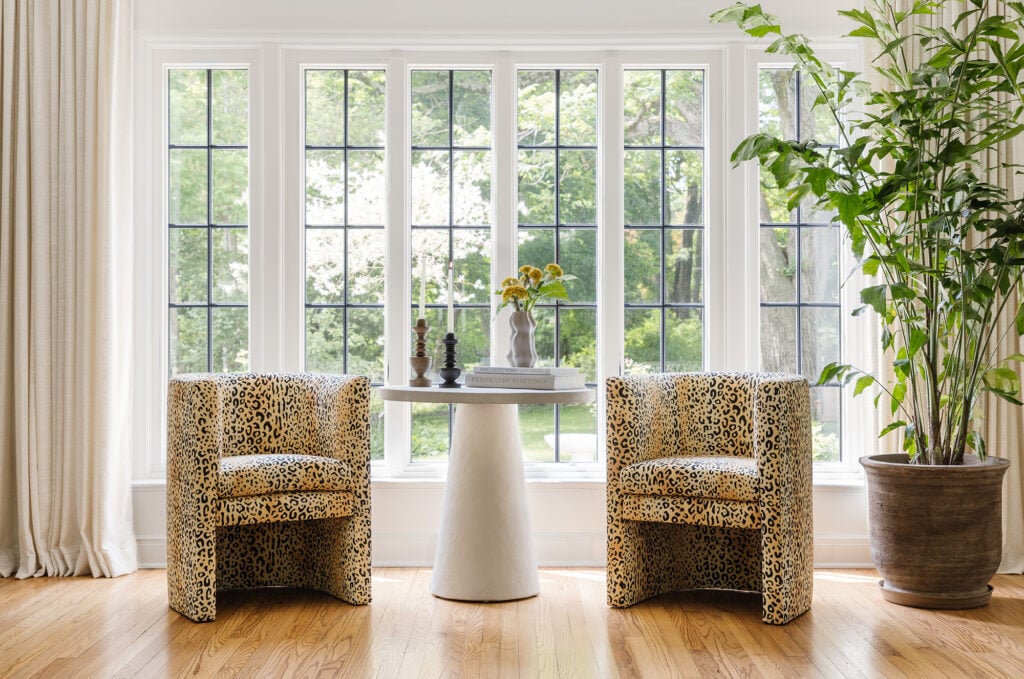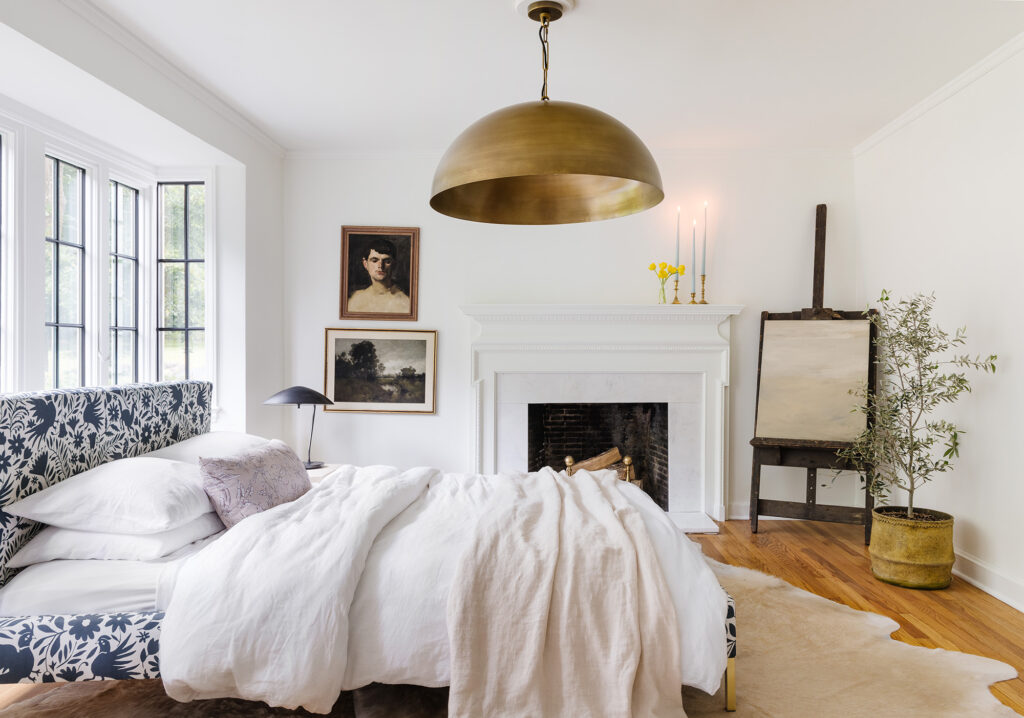The thesaurus isn’t always your friend in the design world. When it comes to different styles, specificity counts — and just because one thing sounds like another, doesn’t mean the two are interchangable. Case in point? Modern design vs. contemporary design: Two different design styles that are more distinct from one another than you might think. Don’t worry, though. It’s easy to distinguish them from one another, once you know what to look for. Let’s break it down.
What Is Modern Furniture?
When people talk about modern style, they’re talking about a specific time period, namely the early to mid 20th century, Elle Decor explains. This time period saw the emergence of many notable and influential designers, like Charles and Ray Eames, Florence Knoll, Le Corbusier, Marcel Breuer, Alvar Aalto, Isami Noguchi, Harry Bertoia, and Charlotte Perriand, among others. Furniture design in this style tends to emphasize clean, straight lines, natural materials, and a simple, neutral palette, and pulls inspiration from both German Bauhaus and Scandinavian design. The Modern design movement also made use of chrome accents, as in Ludwig Mies van der Rohe’s Barcelona chair and Marcel Breuer’s Wassily chair.
What we consider mid-century modern furniture — which is still extremely popular today, thanks to its timelessness, Curbed notes — specifically originated in the specific period ranging from 1933 to 1965, Clever explains. But, it’s still appropriate to refer to these design styles as simply “modern.” Like most modern designs, mid-century modern furniture places an emphasis on minimalism and natural materials. Think: sofas with peg legs and little extra ornamentation, light or warm wood furniture, and the organically inspired, ergonomic Eames Lounge Chair. Mid-century modern furniture was quickly and efficiently produced in the U.S., especially post-World War II — which helped it to gain popularity across the country.
Natural materials, like wood, are core to mid-century modern style, but beyond this base, the color palette of mid-century furniture can vary. Upholstery can range from bright and sunny oranges and yellows to more pared-back green and blues. And, of course, there are plenty of neutral options for the more minimalistically inclined.
Modern furniture pieces, especially mid-century items from acclaimed designers like Knoll, Le Corbusier, Breuer, and more, have become covered collectors’ items in the design world. While many vintage pieces can fetch handsome prices in auctions and antique shops, some of the designs that first became popular 50+ years ago (like the aforementioned Eames Lounge Chair) are still in production today.
Notable Modern Furniture Designs
Many of the modern furniture designs from the 20th century have remained popular, and their staying power is no accident — this design movement was all about creating furniture that was easy to live with, no frills necessary. It’s not a surprise why some of these designs have remained in the design world’s public consciousness.
Modern Chairs
An armchair can make a pretty significant impact in a space — maybe that’s why so many modern chair designs have risen to icon status decades after their debut. We’ve already mentioned Charles and Ray Eames’s classic Lounge chair, but that’s not the only standout seat of the century. Breuer’s Wassily chair, designed in 1925, is emblematic of geometric German Bauhaus style, and the designer’s cane-backed Cesca chair, made in 1928, was the first tubular-steel-frame, caned-seat chair to be mass-produced (it’s also a favorite of many design-lovers today). Eames’s molded fiberglass chair, Eero Saarinen’s tulip chair, and Hans Wegner’s wishbone chair have all also inspired countess seating options (many of which you wouldn’t be hard-pressed to spot in a restaurant today).
Modern Sofas
Several sofa designs have also stood the test of time. The 1954 Florence Knoll sofa, with its steel legs and modular shape, is virtually the blueprint for simple style, while Vladimir Kagan’s 1950 Sepentine sofa is the predecessor to today’s curvy, S-shaped seating options. Tobia and Afra Scarpa’s 1969 Soriana seating system has a distinctive look, combining leather and steel in a curved, belted fashion, and Ray Wilkes’s 1976 “Chiclet sofa” is a playful example of 20th century simplicity, with cushy, rounded arms and legs.
Modern Tables
Forget the long, stately, dining room table — smaller, rounded tables were especially en vogue in the 20th century as many Americans downsized post-WWII. Eero Saarinen’s all-white 1957 pedestal table eschews four legs for a single, futuristic-looking base. Warren Platner’s 1966 pedestal table swapped the simple white stand for a more detailed, chrome base and a glass top. Noguchi’s 1947 coffee table also opted for a glass top, in a rounded, organic shape, paired with a cut-out, abstract wooden base. That’s not to say that modern style doesn’t also have its fair share of simpler options: Dining tables (rounded and angular) in warm and light woods with simple peg legs are also typical of the era.
What Is Contemporary Furniture?
Unlike modern furniture, contemporary furniture doesn’t relate to a specific period or style — instead, when we say “contemporary,” we really do mean whatever is au courant. A contemporary home might feature a living room with large windows and open space instead of a more traditional dining room, but when it comes to contemporary furniture pieces, there’s not as much of a defined look.
Contemporary spaces tend to balance warmth and minimalism, Architectural Design notes — so they can draw inspiration from a number of different design movements, including modern design, art deco, and boho style. Really, contemporary interior design is often about mixing and matching different elements to create inviting spaces that really represent their inhabitants. Contemporary furniture design can encompass mid-century-inspired sofas covered in bold, graphic upholstery, coastal-cool rattan pieces, playful, blob-like armchairs, and colorful, Danish-inspired dining room chairs. Basically, there’s no one style that dominates the contemporary design world today — a lot has to do with a designer and a client’s personal taste.
Modern vs. Contemporary Furniture Design
Although they’re not one-in-the-same, contemporary furniture can draw inspiration from the modern design movement — especially because so many characteristics of modern furniture design are still popular today (simple lines, neutral colors, and a lack of excessive ornamentation). But contemporary rooms may pair these more minimalist designs with unexpected foils: An art deco-inspired headboard may look perfectly elegant next to a mid-century modern nightstand, and a more bohemian wicker coffee table might lend an unexpected casual-cool vibe to a modern-style sofa.
Because contemporary design can be so in-flux — with 1980s Italian Memphis Group-inspired furnishings trending one day and Japanese wabi-sabi aesthetics rising in popularity the next, there’s no one way to categorize what contemporary furniture does and should look like, while modern furniture design has distinctive characteristics that are set in history. The good news? In today’s design world, you’re more than welcome to mix and match to your heart’s content — all to create a contemporary space that most resonates with you.




